Sweet peppers are especially loved by vegetable growers and summer residents. However, many assume that it is very difficult to get a high-quality and plentiful crop in our latitudes. Bell pepper, indeed, is characterized by whimsicality, but to grow this heat-loving vegetable is quite realistic. For this, first of all, it is necessary to carefully select a variety for growth under certain conditions.
So, to achieve excellent yields in areas with unstable climates and short summers, the most acceptable areearly ripe varieties of peppersthat have good germination, fast ripening, disease resistance, unpretentiousness and high productivity.
Content
What is early ripe pepper and general rules for growing
The name itself speaks of the early ripening of vegetables. To get a fully ripened sweet pepper, for planting the most optimal option would be its early ripe varieties. Given the short summer period, 80-90-day-old seedlings are used for planting in the ground.
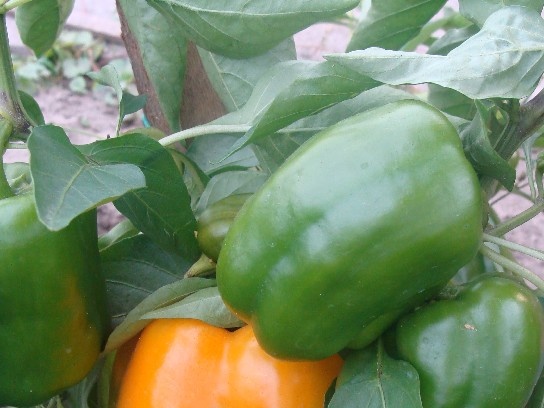
- It is necessary to plant in the ground only seedlings.
- Seeds are sown in individual peat cups, as young seedlings do not tolerate picking.
- The soil mixture for future seedlings is selected loose, which include the presence of humus, sand, soil.
- Not to allow drying of the substrate, but also not to sprout seedlings in order to prevent the appearance of a "black leg".
- After transplanting seedlings to the site, it is recommended to carefully observe the temperature regime, adhere to proper watering.
- Early ripe varieties of vegetable crops require seed germination. In February-March, it is recommended to sow the seeds, having previously kept them for some time in warm water.
- If seedlings were grown at home, then it should be transplanted in March into a greenhouse for adaptation and rooting. At the same time, it is important to provide plants with a temperature of both soil and environment not lower than +15 degrees. If this condition is not met, then the seedlings will slow down in development, and productivity will decrease.
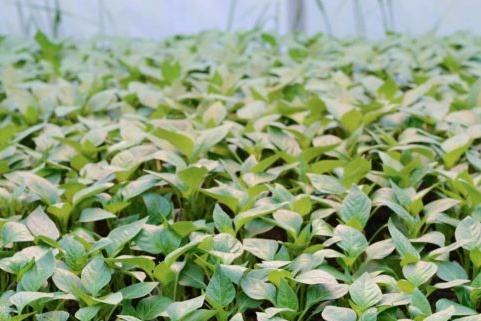
A good way out will be “high beds”, in which it is easier to maintain the required temperature. - In the summer, when reaching +35 degrees, the plantation should be shaded.
- When the plants grow up, and their growth will be 15-20 cm in height, the tops must be pinched to enable the vegetable crop to branch.
- Every ten days, the plant is inspected for pests, as well as extra thickening shoots. Too elongated shoots should be shortened and the shoots grown below the main fork of the stem should be shortened and removed.
- Almost all early varieties of vegetable crops are stunted, so they do not require garter and strengthen growth points on the trellises.
- Pepper needs to observe proper watering and top dressing with organic and mineral fertilizers by alternating.
- It is important to regularly loosen the soil around the bushes so that the plant receives the necessary amount of oxygen.
- Sweet varieties are not recommended to be planted next to the bitter ones, since as a result of pollination of these crops, the sweet ones will be bitter. For this, a distance of 100 m between planted crops should be observed.
Varieties of ripe pepper for open ground
For open ground, experienced breeders today have bred a lot of quality varieties.
Lumina
The most popular among summer residents and gardeners due to its good taste, unpretentiousness of cultivation, resistance to drought and a long shelf life without changing appearance and taste (3 months). It grows on low bushes. The weight of the cone-shaped fruits is small (up to 115 g), the color varies from light green to golden. Thickness - 6 mm.
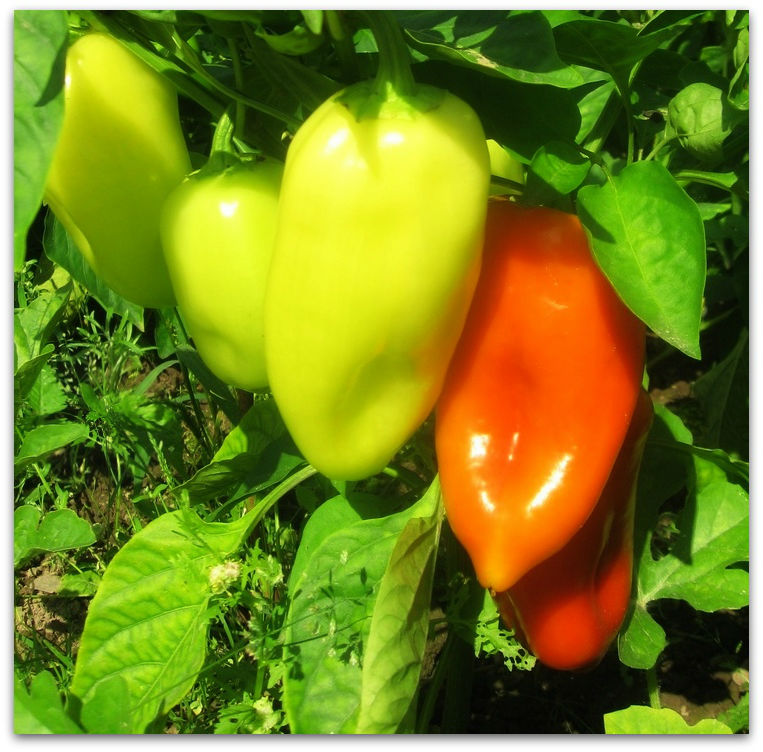
Ivanhoe
This variety is relatively new, but is in high demand due to good germination and rapid maturation. 110 days after germination, peppers are ready to eat. However, the vegetable fully ripens in 20 days. Therefore, the taste of unripe vegetables is very different from fully ripened.
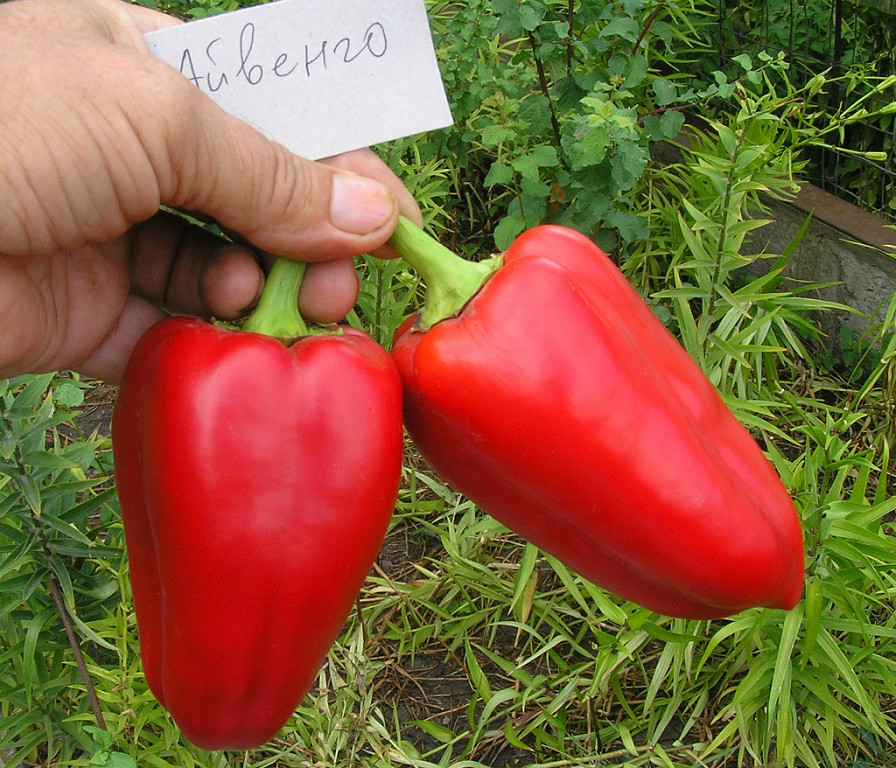
Ivanhoe - beautiful orange or red, elongated and weighing up to 130 g. Meatiness is average - up to 7 mm. Small, compact, not taking up much space. They do not require special formation or garter. Unpretentious to the content, resistant to temperature extremes and various diseases. Can withstand shallow hail.
Marinkin Tongue
Marinkin Tongue was bred by breeders of Dnepropetrovsk; it survives well in an unfavorable climate, giving a steady increase. Therefore, many summer residents prefer this particular sweet pepper.
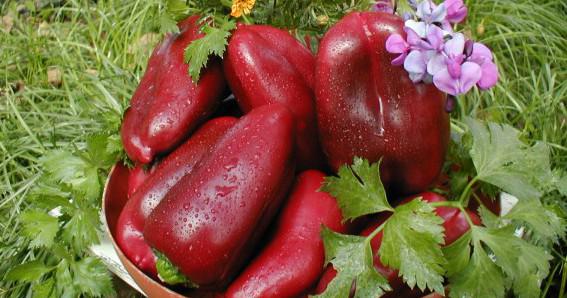
On plants grows up to 15 pieces of vegetables of low weight with a dense planting on the site. However, if you observe the principle of rare planting, then one bush grows to 75 cm and gives fruits of 250 g each. In this case, the plant requires garters to support. Peppers are dark red, slightly curved, conical with a pleasant taste and smell. The pulp is juicy, reaches 10 mm. It is not subject to long storage and lasts only 1.5 months.
Triton
They are referred to as super-early, weather-tolerant, including in the south of Siberia: showers, temperature differences. It is in demand due to the high yield, since each plant produces 35-45 vegetables weighing 130 g, conical round shape, medium meatiness, orange and red, sweet and fragrant. To form abundant ovaries and accelerate plant growth, the first ovary should be removed. Otherwise, the culture can slow down the development, which will lead to a decrease in the number of growth.
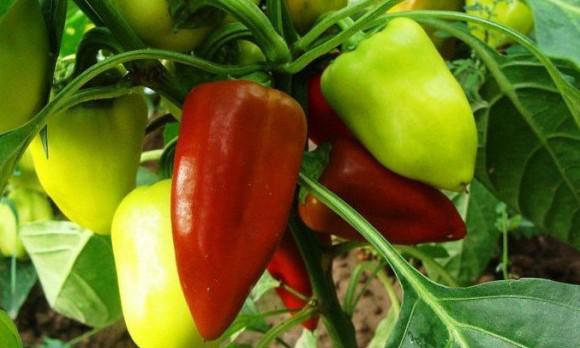
Atlantic F1
The bush is quite high and reaches 1 meter in height, so it requires a garter on the support. From the moment of planting to the final maturity of the hybrid, about three months pass. They are distinguished by good resistance to diseases and pests. Atlantic large, elongated, barrel-shaped and fleshy, weighing up to 450 grams. It finds its application in canning, preparation of salads, fresh consumption. Open soils and greenhouses are places where this hybrid can be grown.
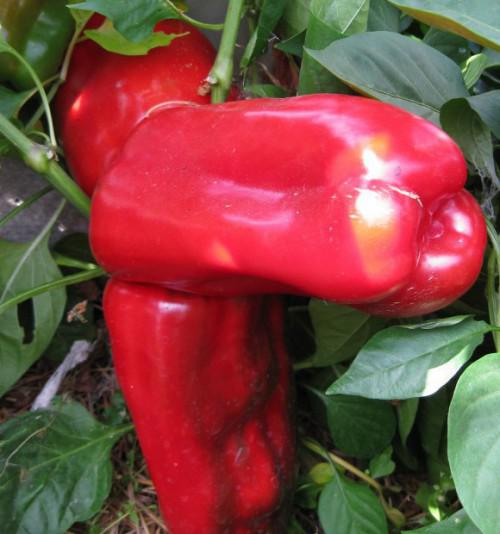
Red Square
Superearly representative of vegetable culture. Shrubs are low, reach 70 cm. Harvest can be removed within three months from the beginning of planting of pepper. Hardy to various viral diseases. The red square is large enough, weighing up to 300 grams, in the form of a cube with internal partitions. When fully ripened, they have a red color. The pulp is thick, the wall thickness is 9 mm. It is well transported and stored.
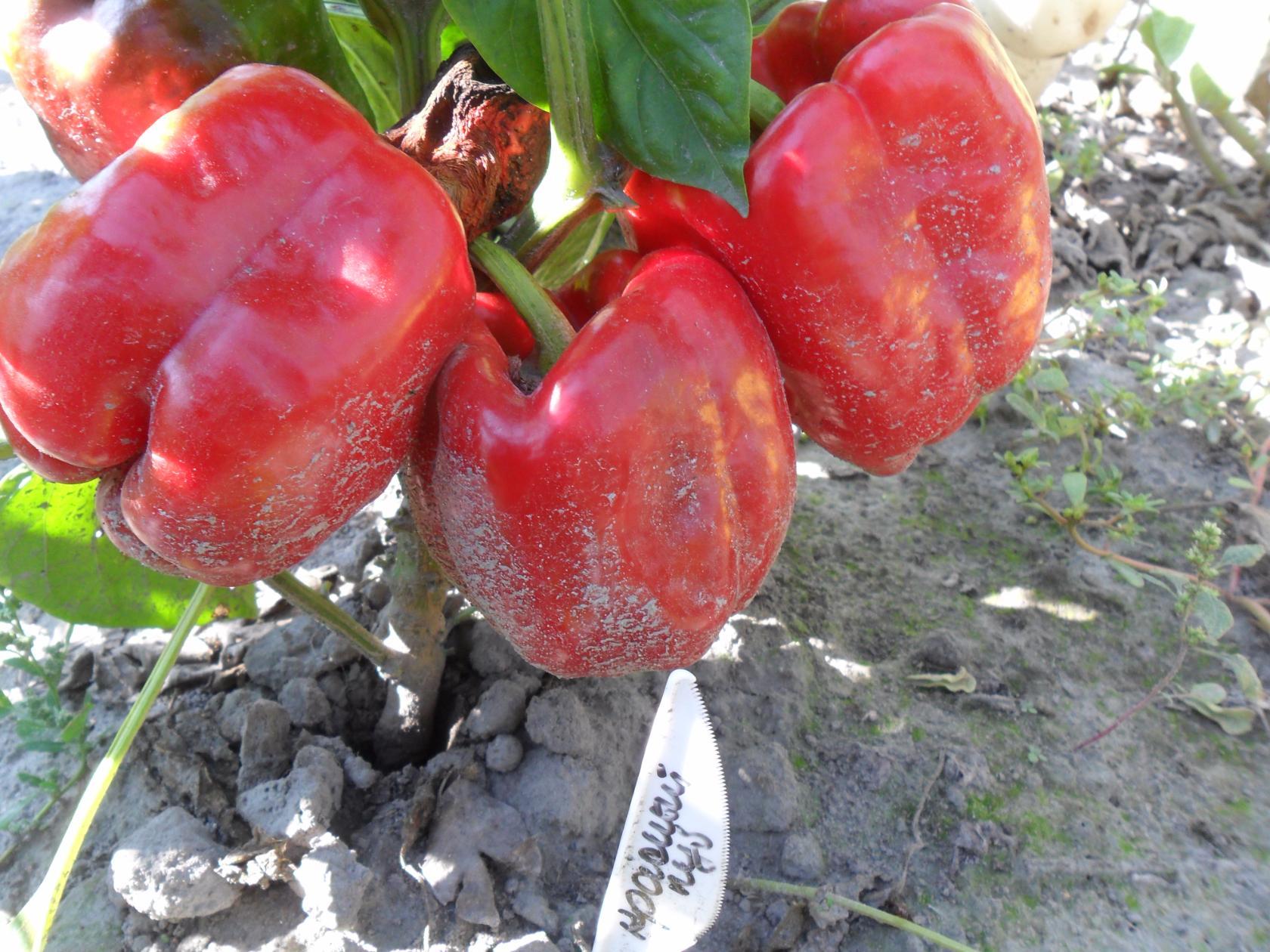
Czardas
Chardash is relatively low (70 cm), compact, grows with a bouquet. Differs in good productivity (up to 17 pieces on a bush). The fruits are cone-shaped, large, weighing up to 220 g. The wall is 6 mm thick, of medium meatiness. The ovary is formed into bundles.Fully ripe peppers are orange-red in color. A technically mature vegetable can be eaten, but preference should be given to fully ripened vegetables.
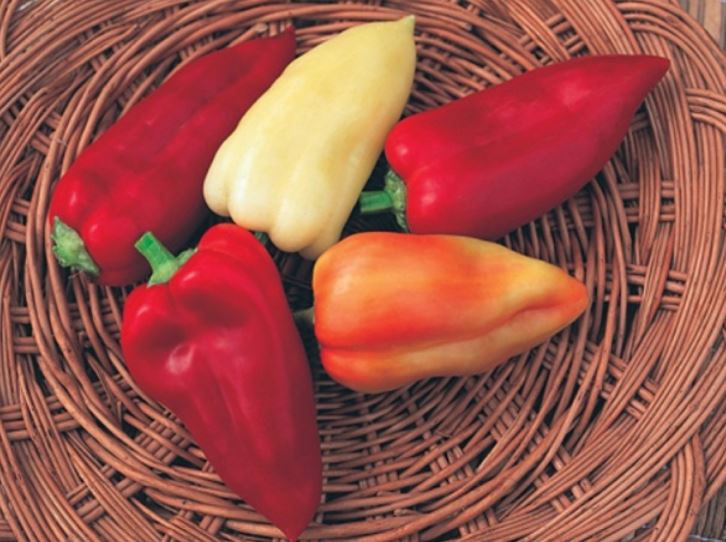
Actor
This species is famous for its large red fruits, weighing up to 300 g, which ripen on the 130th day of their growth. Each fruit has an elongated conical shape. In the initial stage of ripening, it has a bright green color, ripening, turns red. The pulp is tasty, juicy, fleshy.
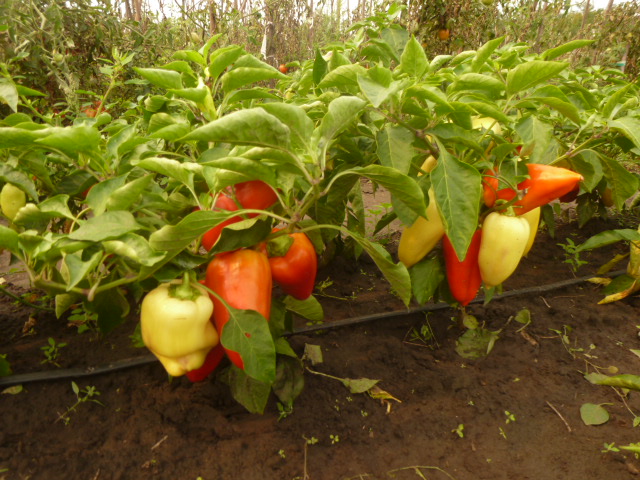
Lyceum is relatively high and reaches 140 cm, very branched. Therefore, on the site you can not plant more than 4 bushes per 1 m of area. Moreover, up to 11 kg of crop is harvested from one square meter of plantation. The culture is very unpretentious to the growing conditions, does not require any special care, and is resistant to diseases.
Know-it-all
Unusual variety, which is characterized by the growth of prismatic peppers up and not down. Each fruit reaches a mass of 150 g, fleshy, juicy and delicious. At the beginning of ripening it has a dark green color, which gradually, during the ripening process, turns red. Ripening dates are 3.5 months. Resistant to disease. The sneak is very productive, allows you to collect from 1 sq.m plantations of 10 kg of peppers that are stored for a long time.
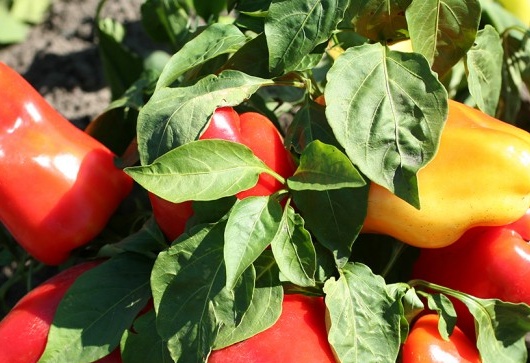
Choosing an early pepper for growing in a greenhouse
To get a high early crop, many gardeners are engaged in the cultivation of early ripe pepper in a greenhouse.
Apricot favorite
High-yielding, designed for cultivation in greenhouse conditions, but under good climatic conditions, this species has worked well in open soils.
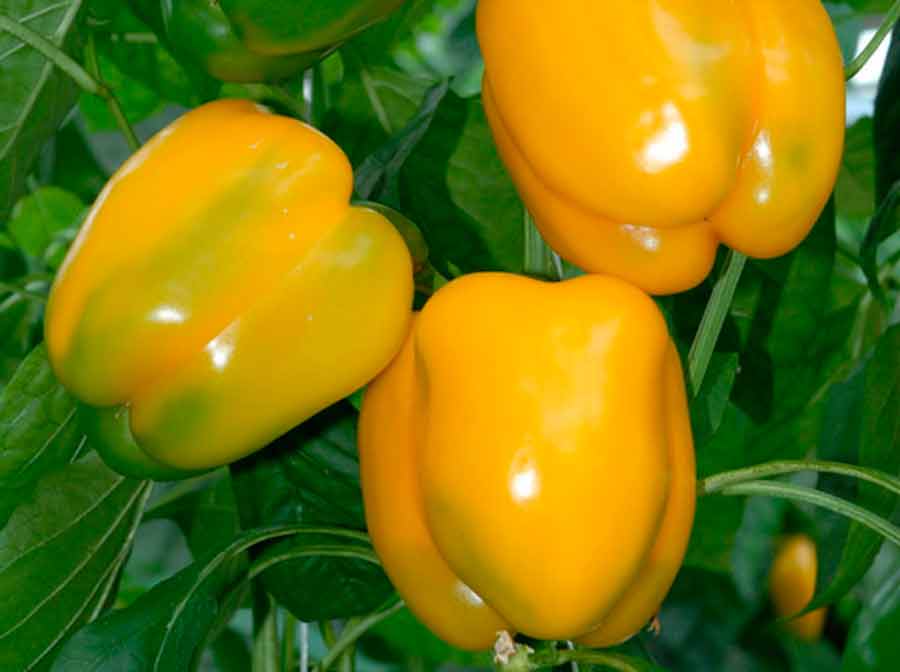
Shrubs of short stature (40-50 cm). Fruits are cone-shaped, smooth and glossy. Wall 7 mm thick. When fully ripened, they acquire a bright orange color. Differs in special juiciness. Suitable for all types of use: from fresh consumption to canning.
Agapovsky
This variety belongs to the early ones, distinguished by their special resistance to putrefactive diseases and good productivity. A bush of medium height (60-80 cm). Sometimes it requires garter. Fruits are large, smooth, prismatic, not very ribbed. The ovary has a bright green color, at the final ripening - bright red.
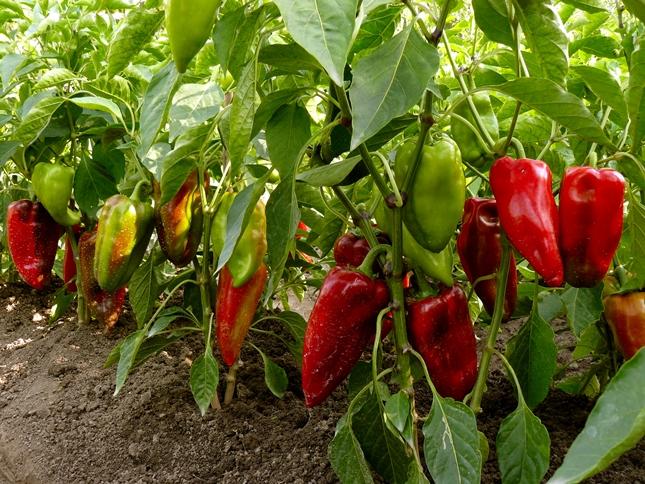
Belladonna F1
This early hybrid is ideal for growing in greenhouse conditions. However, in open ground, subject to all agricultural conditions, it can also yield good yields. A bush of medium height, compact (60-80 cm). The fruits are large, in the form of a cube, smooth bright yellow in color, medium meatiness. The hybrid is resistant to viral diseases.
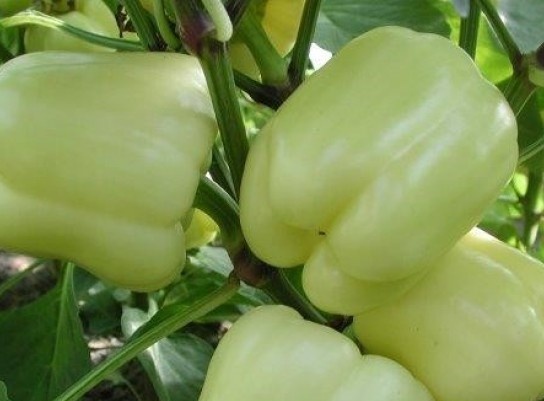
Orient Star Chocolate F1
Relate to early hybrids, characterized by a wonderful taste and unusual coloring, and immunity to many diseases. The plant is medium-sized, branched, powerful (70 cm). Hybrids are large enough, cylindrical, shiny, fleshy. A sign of final maturity is a dark brown color. High-yielding, lends itself well to transport and storage.
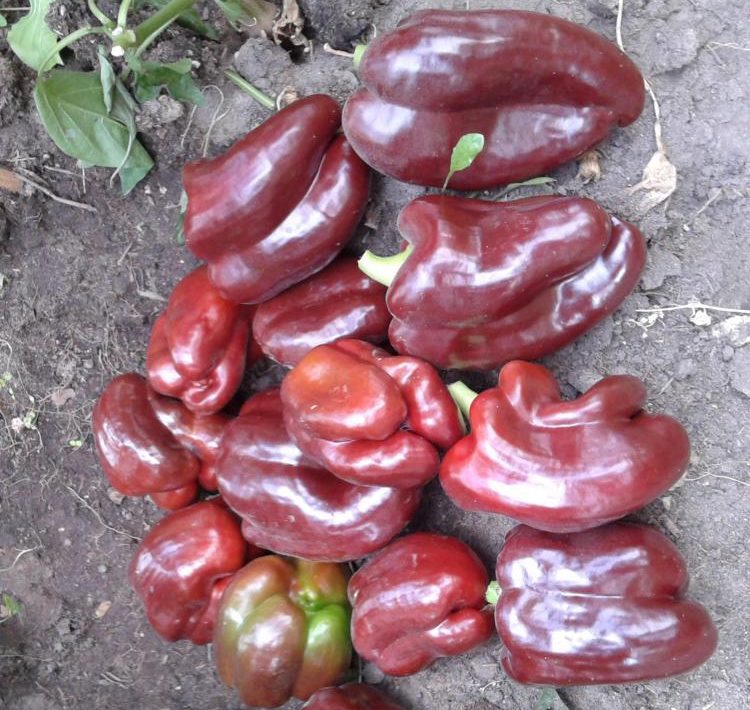
Common questions
Due to the short ripening time from sowing seeds to the soil until harvest, early ripe sweet pepper varieties Ideal for growing even in unstable summers.




 Calorie pepper stuffed with meat and rice - BZHU per 100 grams
Calorie pepper stuffed with meat and rice - BZHU per 100 grams Gorky pepper - the best varieties for open ground
Gorky pepper - the best varieties for open ground Hot pepper seeds - the best varieties for open ground and reviews
Hot pepper seeds - the best varieties for open ground and reviews Capsicum tincture for hair - how to use and reviews
Capsicum tincture for hair - how to use and reviews